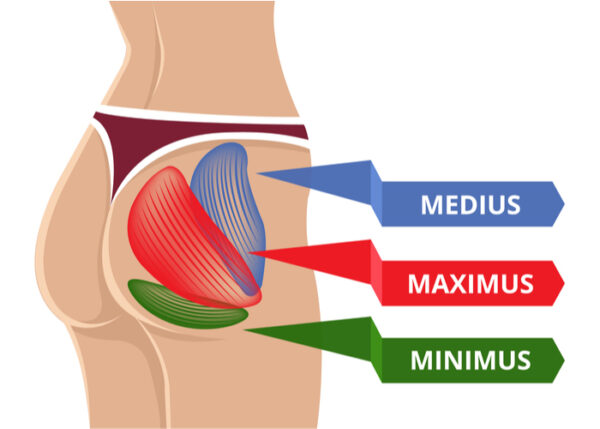Gluteus Medius & Minimus Muscle Repair Surgeon

Are you an athlete who participates in contact or competitive sports? If so, you may be at risk of tearing your gluteus minimus or gluteus medius tendon in the hip. Injury to these muscles and their tendon attachments can occur as a result of chronic degeneration from overuse in competitive sports and activities. Gluteus tear repair surgeon, Dr. Jeff Padalecki provides diagnosis and both surgical and nonsurgical treatment options for patients in Austin who have suffered a gluteus tear. Contact Dr. Padalecki’s team today!
What is a Gluteus Medius Repair and a Minimus Muscle Repair?
During a traumatic event (such as a direct impact sustained during sports competition), the tendon attachment of the gluteus medius and/or minimus muscles can peel-off at their attachment site on the greater trochanter. The greater trochanter is part of the femur and is located at the top of the thigh bone. Injury to these muscles may cause significant pain and weakness, and may also interfere with daily activities. The gluteus medius and minimus muscles are key stabilizers of the hip joint and serve very important functions during walking and sporting activities. Injury to these muscles and their tendon attachments can also occur as a result of chronic degeneration of the tendon, which usually occurs from overuse in competitive sports and activities. Austin, Round Rock, and Cedar Park, Texas communities hip surgeon, Dr. Jeff Padalecki is available to treat patients who require a minimally invasive gluteus medius repair or minimus muscle repair.
When a tear to the gluteus muscles occurs, Dr. Padalecki will assess the injury and will evaluate if a patient can recover without surgery. Typically, the first attempts to improve strains of these muscles and early injury to the tendons will involve control of the pain and strengthening of these muscles through physical therapy.

How is a Gluteus Medius/Minimus Repair Performed?
If symptoms do not improve, Dr. Padalecki may recommend surgery. This is usually conducted arthroscopically, which is a minimally invasive approach that uses a small camera to assess the injury, and small surgical tools to complete the process. During this procedure, Dr. Padalecki will repair the tendon at the attachment site using sutures that he will embed into the bone. By tying these sutures down tightly, the torn tendon is once again attached to the bone.
In many cases, during arthroscopic repair surgery for the gluteus muscles, the removal of surrounding irritated tissue will also take place. This is known as the greater trochanter bursa. Dr. Padalecki may also conduct an iliotibial band release which helps improve visualization of the normal tendon attachment site and can help decrease pain associated with bursitis.
What Occurs After Gluteus Medius or Minimus Repair?
Immediately following surgery, Dr. Padalecki will prescribe a thorough rehabilitation program. It is important for the patient to complete the rehab process so that a full recovery can be made. Following this surgery, patients are encouraged to avoid full weight bearing on the affected limb for 4 to 6 weeks to allow the body to heal the repair.
For more information on arthroscopic hip surgery, or for additional resources on minimally invasive gluteus medius repair or minimus muscle repair, please contact the Austin, Texas orthopedic office of Dr. Jeff Padalecki, hip surgeon.